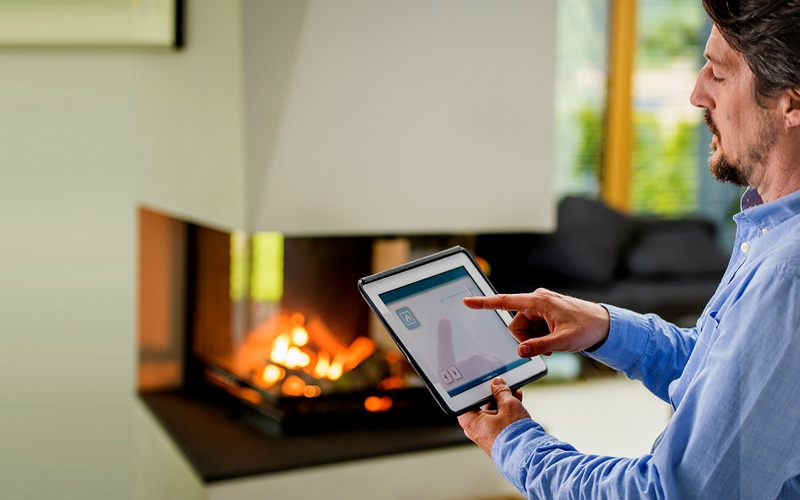Starting a business can seem easy until you are in the real market and your product has no real takers. Actually, 34% of startups fail due to lack of product fit. As you look to enter the market, or rather stay relevant in the market, your product should wow your customers and have tangible value for them.
If you’re like me, your day is filled with endless emails and meetings. It can be hard to find the time to actually learn something new. As a result, many companies are relying on outside consultants to help them build innovative digital products that wow their customers. The problem with this approach is that most people don’t know how to do it themselves — and we need more people in our industry who can build these amazing products! Apparemtly for us (and our customers), there are some simple rules for building better digital experiences that will help anyone from beginner to expert become an innovative product designer:
1. Get to know the problem you’re solving
Before you can create a solution, it helps to understand what problem your product is trying to solve. Do some research. Find out how many people are affected by this issue and how much money they spend on it every year. Then think about how other companies have solved similar problems in the past—what worked, what didn't work, who was successful at what they did—and figure out whether or not this is something that interests you enough to pursue further (if yes) or if there's another way of approaching this opportunity (if no).
Understand your user's needs and motivations
Once we've identified our target audience and learned more about their issues/problems/pain points, we can then move on towards designing our product based on those insights rather than just guessing at what might work best based on intuition alone!
2. Choose a platform
Choosing a platform is one of the most important decisions you will make as a product developer, and it's also one of the most difficult. There are many factors that go into choosing the right platform:
- Easy to use - Choose an easy-to-use system that has good documentation, tutorials and training materials.
- Easy to learn - Make sure your customers can easily understand how to use their new digital product without having to read hundreds or thousands of pages of technical information first.
- Easy to maintain - Make sure your products are built with backup systems in place so they're always running smoothly even if there are bugs introduced by third parties or other developers who work on them (or even just users themselves).
3. Give your product a space to live
Your product needs a home—a physical location where people can find it, interact with it and learn more about what you have to offer. If you're building an app, the best place for this is likely going to be on the web or mobile app store (or both). This means that when someone downloads your app from Google Play or Apple's App Store (or even just goes online), they'll be able to use it right away! All of their existing data will still be there—they won't have lost anything important because of this update.
If you want users who haven't yet downloaded anything from your company website either make sure their browser settings are set up properly so they don’t see any new tabs when visiting from an external source; otherwise people may think something has changed without realizing why...and then complain about how things were before."
4. Build your MVP
The MVP (or minimum viable product) is a product that has just enough features to satisfy early customers and can be launched quickly. It’s important to know what you need from an MVP before you start building it, so let's talk about how you get started on this journey:
Before beginning the process of building your MVP, make sure the platform supports your needs. For example, if you want to sell products online but don't have merchant accounts yet, then Shopify may not be right for your project — though there are other options available such as Stripe or PayPal Express Checkout.
Once we've chosen our platform(s), now comes the hard work: deciding which features will make it into our initial release version of our app/website/etc...
5. Start generating ideas
There are a lot of different ways to generate ideas and get the most out of your team. Here are some tips for doing so:
- Brainstorming techniques
- How to get the most out of your team
- How to make sure everyone is contributing ideas
6. Involve your team
Your team is the most important element in creating an innovative product. If you don’t involve your team, then chances are good that you won't get a great product built at all. The best way to start is by involving them from the beginning of the process—from defining the problem and choosing a platform, building an MVP and gathering feedback from users/customers.
Once you've done this work with your team members and have some ideas about what kind of product we want to build:
- Involve them in coming up with ideas for features or enhancements
- Involve them when designing our user flow (or interface) so that it's easy for new users who come in late
7. Try something new first
When building innovative products, it's important to try things that are different from what your competitors are doing. This will allow you to be the first in your market and give customers something they haven't seen before. You can also use this strategy when trying something new—try not only innovating within a certain market but also outside of it! For example, if you're making an app for people who love cooking but don't have access or know how much time they should spend on preparing meals, why not make an app that helps them plan what ingredients they need? The possibilities are endless!
8. Design with empathy
The next step is to understand the needs of your customers. This is the first thing you should do before designing anything. It’s important that you know what they want, why they want it and how they will use it.
This step also covers some of the following:
- Understand their context – What industry am I in? How many people are using this product? Am I solving a problem for them or for myself (e.g., “how can I get more followers on social media”)?
- Understand their culture – Where do I live/work/live/learn etc.? Do people around me have similar interests as me; do they like different kinds of music than me? Either way would fit nicely into my life as well!
- Understand their mindset - Why do we buy things at all? Are we paying because our friends say "you must buy this" or because we need something right now that isn't available anywhere else right now (this could be any number of reasons).
9. Collaborate more and listen more
Collaboration is key to innovation. It helps you get a better understanding of the problem, the customer, and your team.
To innovate you must deliver something of value (or improve on what already exists). You can do this by creating something new or improving upon an existing product. To innovate you must experiment—and this doesn't mean throwing things against the wall and seeing if they stick; instead it means looking at past experiences from other companies' workflows as well as their competitors', so that you can identify what worked for them and adapt it for your own purposes.
This also means allowing failure: if there are any risks involved in trying something new then make sure everyone understands why those risks exist before starting anything new! And finally...
10. Use agile development methods to iterate quickly
Agile development methods are a great way to build better products. Agile development methods help you iterate quickly, which means that the product will be developed in smaller chunks and with more frequent releases. This allows designers and developers to work together more effectively, collaborate more often with their customers, and listen less as they go through the process of creating something new.
Agile development also helps build better products because it requires collaboration between all parts of your company—from engineers to product managers—and involves everyone on board from the beginning (or at least very early on). By involving everyone throughout development instead of waiting until late in the process when everything's already set up and approved by higher-ups; this allows for innovation rather than just following someone else's plan or vision for what needs improving about an existing product line."
11. Be responsive to feedback
The best way to get feedback is to ask for it.
Ask your customers what they like and dislike about the product, as well as how you could improve it. If you’re building a new mobile app, consider asking users if they would be willing to leave their reviews on the App Store or Google Play Store after using the product for some time. The more engaged with your audience you are, the better chances there are of getting them involved in shaping what goes into future versions of your product!
Conclusion
Wow your customers by building innovative digital products that solve their needs and deliver a great user experience. As a customer, you’re looking for a product that solves your problems and delivers an excellent user experience. You want to be able to use it easily, intuitively and with little effort. And when it comes time to buy again, you want the same thing again: a great experience every time!
To build this kind of product all you need is a strong understanding of what makes great digital products so innovative—and then apply those principles in building yours.



